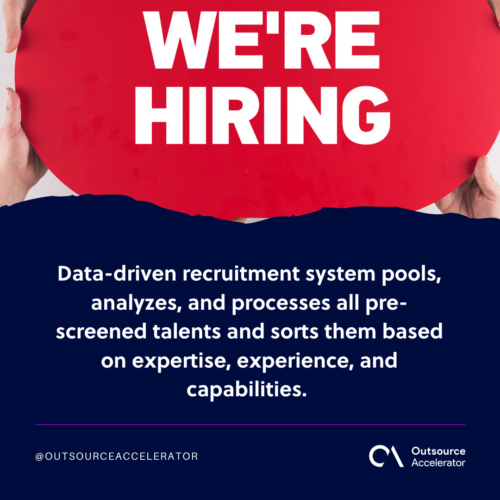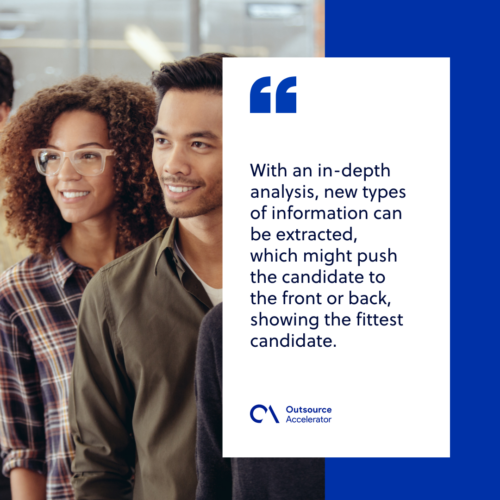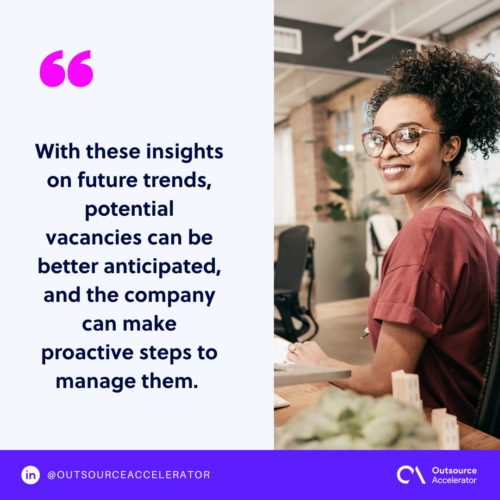Benefits of data-driven recruitment

Technological advancements have created huge opportunities for companies to scale faster and earn higher profits.
Collecting all sorts of information is made possible through the internet, various applications, and devices. However, this development is not at all perfect. It has created a new problem – the superfluity of data.
Other businesses may need to learn to leverage data insights for their own gain. More so, they may not have coped yet with the fast innovation in data collection.
Some industries may have been at the forefront of tapping outsourced services for insights. But they are yet to fully realize the true benefits of data, especially in data-driven recruitment.
But what is data-driven recruitment? How does it work, and how much does it cost? All of these and more will be expounded on in the following sections.
What is data-driven recruitment?
As the term implies, data-driven recruitment is a novel approach utilizing big data in hiring talents. The system pools, analyzes, and processes all pre-screened talents and sorts them based on expertise, experience, and capabilities.
The end goal of the data-driven process is to narrow down the candidate pool to the cream of the crop of the batch.
Like other systems, a data-driven recruitment process is a repetitive cycle. The more data collected, the more cost-effective and efficient it is to produce quality insights.
This new recruitment modality was just created in recent years and has been part of the following innovations initiated in the HR sector:
- HRIS
- Performance management platforms
- Applicant Tracking System

Common recruitment problems
More often, the problems encountered by recruiters are:
- Hiring the wrong person for the job
- Attrition is high due to employees’ lack of satisfaction
- Huge loss in company assets and resources due to unproductive employees
Data-driven recruitment can change and manage these problems by providing insights into the best possible candidate in the market and their corresponding cost.
It considers many factors about the applicant based on the information gathered, such as social media posting, online publications, and past employment.
Data-driven recruitment redefines and reshapes recruitment by empowering the recruiter to go beyond the traditional resume and cover letter-centric decision-making.
This novel recruitment methodology enables them to make better selections and decisions in hiring talents that will fit and stay in the company for years. This will create more impact, especially in making investment decisions for their talents.
5 benefits of data-driven recruitment
Just like in any technology, the benefits of a data-driven recruitment approach will vary on how a company will put it into use. Maximizing this by offshoring recruitment to service providers such as ConnectOS is even possible, helping you get the best results and candidates at once.
Here we have outlined five of the primary advantages of this practice:
1. Making sound decisions in hiring
One of the major challenges for a recruiter is choosing between two or more incredibly qualified candidates.
In most cases, recruiters depend on their gut feeling and intuition. More often than not, this gut feeling proves to be wrong due to the performance of the newly hired employee.
This situation can be avoided with the help of a data-driven approach. The system provides various variables for the recruiter to weigh, which it might have overlooked.
With an in-depth analysis, new types of information can be extracted, which might push the candidate to the front or back, showing the fittest candidate.
The collection and analysis of these kinds of data will provide a holistic view of the hiring, giving enough room to make a sound decision.

2. Improving the quality of projects
Considering recruitment analytics can drastically improve the overall quality of work and culture of the organization.
Hiring the best and brightest candidates will provide better results, faster turnaround time, and increased efficiency in the workplace.
Employing top-tier staff can boost customer satisfaction and, in the long run, improve the organization’s growth and profitability. Hence it is important to take into consideration the various variables and data to get a better understanding of the candidates and their work ethics.
3. Cost effective hiring process
Traditionally, hiring employees is expensive. To get the best-qualified candidate, businesses outsource to third-party service providers to pool talents.
In some cases, HR recruiters take a membership to various online platforms to post job ads for interested applicants to review. This traditional process may not be cost-effective since they will be required to pay premium fees, and advertising costs are also huge.
In a data-driven system, this is eliminated. The system screens the candidates based on the specifications identified by the recruiters.
The HR team just shortlists the best applicants that resonate with their organization and finishes the process within days.
4. Improve the hiring experience
Any hiring process has lapses and roadblocks. Some processes are redundant and too annoying to candidates.
Most of the time, these put off a lot of qualified candidates from applying to the company.
With the help of a data-driven approach, these lapses can be identified.
The HR team can either remove or change this to make it leaner and get the quality applicants the company deserves.
5. Better hiring practices and forecasts
Data analytics is almost 100% accurate, especially in predicting several situations.
One of these is patterns and trends in attrition and the labor movement. With these insights on future trends, potential vacancies can be better anticipated, and the company can make proactive steps to manage them.

The future of recruitment
The future of most HR practices is characterized by the dominance of data analytics and big data. Inevitably, traditional HR practices will eventually become automated.
With this in mind, the success and benefits of data-driven recruitment and other automated HR technologies rest on the openness of the HR team to these changes.
These new technologies will challenge the traditional techniques and perceptions of HR practitioners. Hence, the benefits are as good as the practitioners’ perception of these nascent technologies.
Companies must first have a paradigm shift before embracing these new technologies in their organizations.







 Independent
Independent




